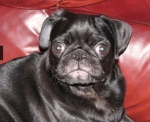Interpreting Sleep Study Results
Interpreting Sleep Study Results
I just picked up my home sleep study results that was performed July 7. Some additional terms used here that I had not seen before.....pRDI (respiratory disturbance index). I had 100 events with an all night score of 18.0. Is not RDI a better determinate of sleep disturbance than AHI? And is it correct to say that RDI on OSCAR is the sum of CA, OA, UA and H? What is UA anyway??? My AHI came in at 12 (mild sleep apnea). RDI is judged on the same scale (moderate sleep apnea). Then there is ODI (oxygen desaturation index). I had 54 events with an all night score of 9.7. That rates as mild. Thoughts?
Airsense 10 Autoset
Dreamwear full face mask
Dreamwear full face mask
Re: Interpreting Sleep Study Results
UA is unknown apnea or unclassified apnea. The machine knew something happened but didn't know what to call it.
Normally we only see this when there are some rather large leaks happening affecting the machine's sensing ability...at least with the regular AirSense 10 and a couple of the Air Curve 10 models.
Couple of the other high end models it means something else.
The jury is still out on the impact of RDI vs AHI but AHI is still the most common data point used for diagnosis and severity category classification and earning a diagnosis that means insurance will pay for the cpap equipment.
It is true though that people can have a higher RDI and not necessarily have a high AHI and they still have crappy sleep.
They still have some sort of sleep disturbance from respiratory events of some sort. It's just they might not meet criteria for a full grown even flag.
Example...all the usual categories of events have certain criteria that need to be met and one big criteria is a 10 second minimum duration. If the flow reduction or cessation of breathing only lasts 9 seconds...no flag but a high chance it will still disturb sleep.
There had to be lines somewhere and 10 seconds and a certain amount of air flow reductions are needed to earn a flag.
RDI used to be more pooh poohed off but now people are paying more attention to it and realizing that you don't necessarily have to have just a high AHI to have a high number of disturbances from respiratory related issues.
Same with O2 desat events. Not everyone will have significant desats with their OSA...so it alone isn't necessarily a good line in the sand. I have a friend who came out of an in lab sleep study with AHI of 60 plus...but her O2 levels never really dropped all that much. Her baseline average was 96% and the lowest her oxygen levels ever went to was 93% which is actually within the normal drop we can see just from sleeping even with no OSA events going on.
In OSCAR you can set some User custom flagging which can actually impact RDI more than the OA, Clear Airway/central, hyponea part of the RDI. UC flagging can take into account those 9 second events that don't earn a flag.
In OSCAR...Preferences...then CPAP tab and lower left corner is where a person can add in User custom flagging.
Won't really change AHI itself but it can change RDI.
Normally we only see this when there are some rather large leaks happening affecting the machine's sensing ability...at least with the regular AirSense 10 and a couple of the Air Curve 10 models.
Couple of the other high end models it means something else.
The jury is still out on the impact of RDI vs AHI but AHI is still the most common data point used for diagnosis and severity category classification and earning a diagnosis that means insurance will pay for the cpap equipment.
It is true though that people can have a higher RDI and not necessarily have a high AHI and they still have crappy sleep.
They still have some sort of sleep disturbance from respiratory events of some sort. It's just they might not meet criteria for a full grown even flag.
Example...all the usual categories of events have certain criteria that need to be met and one big criteria is a 10 second minimum duration. If the flow reduction or cessation of breathing only lasts 9 seconds...no flag but a high chance it will still disturb sleep.
There had to be lines somewhere and 10 seconds and a certain amount of air flow reductions are needed to earn a flag.
RDI used to be more pooh poohed off but now people are paying more attention to it and realizing that you don't necessarily have to have just a high AHI to have a high number of disturbances from respiratory related issues.
Same with O2 desat events. Not everyone will have significant desats with their OSA...so it alone isn't necessarily a good line in the sand. I have a friend who came out of an in lab sleep study with AHI of 60 plus...but her O2 levels never really dropped all that much. Her baseline average was 96% and the lowest her oxygen levels ever went to was 93% which is actually within the normal drop we can see just from sleeping even with no OSA events going on.
In OSCAR you can set some User custom flagging which can actually impact RDI more than the OA, Clear Airway/central, hyponea part of the RDI. UC flagging can take into account those 9 second events that don't earn a flag.
In OSCAR...Preferences...then CPAP tab and lower left corner is where a person can add in User custom flagging.
Won't really change AHI itself but it can change RDI.
_________________
| Machine: AirCurve™ 10 VAuto BiLevel Machine with HumidAir™ Heated Humidifier |
| Additional Comments: Mask Bleep Eclipse https://bleepsleep.com/the-eclipse/ |
I may have to RISE but I refuse to SHINE.










